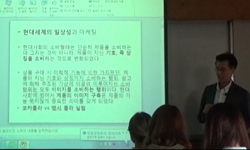This study adopts the SWARCH model to examine the volatile behavior and volatility linkages among the four major segmented Chinese stock indices.We find strong evidence of a regime shift in the volatility of the four markets, and the SWARCH model appe...
http://chineseinput.net/에서 pinyin(병음)방식으로 중국어를 변환할 수 있습니다.
변환된 중국어를 복사하여 사용하시면 됩니다.
- 中文 을 입력하시려면 zhongwen을 입력하시고 space를누르시면됩니다.
- 北京 을 입력하시려면 beijing을 입력하시고 space를 누르시면 됩니다.
https://www.riss.kr/link?id=A104944847
-
저자
ZHUO QIAO (The University of Macau) ; WEIWEI QIAO (The Wenzhou University) ; Wing-Keung Wong (Hong Kong Baptist University)
- 발행기관
- 학술지명
- 권호사항
-
발행연도
2010
-
작성언어
English
- 주제어
-
등재정보
KCI등재,SCOPUS,SSCI
-
자료형태
학술저널
-
수록면
225-246(22쪽)
-
KCI 피인용횟수
2
- 제공처
-
0
상세조회 -
0
다운로드
부가정보
다국어 초록 (Multilingual Abstract)
This study adopts the SWARCH model to examine the volatile behavior and volatility linkages among the four major segmented Chinese stock indices.We find strong evidence of a regime shift in the volatility of the four markets, and the SWARCH model appears to outperform standard generalized autoregressive conditional heteroskedasticity (GARCH) family models. The evidence suggests that, compared with the A-share markets, B-share markets stay in a high-volatility state longer and are more volatile and shift more frequently between high- and low-volatility states. In addition, the relative magnitude of the high-volatility compared with that of the low-volatility state in the B-share markets is much greater than the case in the two A-share markets. B-share markets are found to be more sensitive to international shocks, while A-share markets seem immune to international spillovers of volatility. Finally, analyses of the volatility spillover effect among the four stock markets indicate that the A-share markets play a dominant role in volatility in Chinese stock markets.
참고문헌 (Reference)
1 Chen, H.,
2 Su, D., "Why does return volatility differ in Chinese stock markets?" 7 (7): 557-586, 1999
3 Qiao, Z., "Volatility switching and regime interdependence between information technology stocks 1995-2005" 19 : 139-156, 2008
4 Edwards, S., "Volatility dependence and contagion in emerging equity markets" 66 : 505-532, 2001
5 Mok, H., "Underpricing and aftermarket performance of IPOs in Shanghai, China" 6 : 453-474, 1998
6 Hansen, B. E., "The likelihood ratio test under non-standard conditions: testing the Markov trend model of GNP" 7 : 61-82, 1992
7 Abdel-khalik, A. R., "The information environment of China’s A and B shares: can we make sense of the numbers?" 34 (34): 467-628, 1999
8 Brooks, R., "Returns and volatility on the Chinese stock markets" 13 : 747-752, 2003
9 Qiao, Z., "Policy change and lead-lag relations among China’s segmented stock markets" 18 (18): 276-289, 2008
10 Lamoureux, C. G., "Persistence in variance, structural change and the GARCH model" 8 : 225-234, 1990
1 Chen, H.,
2 Su, D., "Why does return volatility differ in Chinese stock markets?" 7 (7): 557-586, 1999
3 Qiao, Z., "Volatility switching and regime interdependence between information technology stocks 1995-2005" 19 : 139-156, 2008
4 Edwards, S., "Volatility dependence and contagion in emerging equity markets" 66 : 505-532, 2001
5 Mok, H., "Underpricing and aftermarket performance of IPOs in Shanghai, China" 6 : 453-474, 1998
6 Hansen, B. E., "The likelihood ratio test under non-standard conditions: testing the Markov trend model of GNP" 7 : 61-82, 1992
7 Abdel-khalik, A. R., "The information environment of China’s A and B shares: can we make sense of the numbers?" 34 (34): 467-628, 1999
8 Brooks, R., "Returns and volatility on the Chinese stock markets" 13 : 747-752, 2003
9 Qiao, Z., "Policy change and lead-lag relations among China’s segmented stock markets" 18 (18): 276-289, 2008
10 Lamoureux, C. G., "Persistence in variance, structural change and the GARCH model" 8 : 225-234, 1990
11 Ljung, G., "On a measure of lack of fit in time series models" 65 : 297-303, 1978
12 Diebold, F. X., "Modeling the persistence of conditional variance: a comment" 5 : 51-56, 1986
13 Lin, J. L., "Modeling China Stock Markets and International Linkages, Working Paper" Institute of Economics, Academia Sinica 2003
14 Sjoo, B., "Market segmentation and information diffusion in China’s stock markets" 10 : 421-438, 2000
15 Yang, J., "Market segmentation and information asymmetry in Chinese stock markets: a VAR analysis" 38 (38): 591-609, 2003
16 Qiao, Z., "Long-run equilibrium, short-term adjustment, and spillover effects across Chinese segmented stock markets and Hong Kong stock market" 18 : 425-437, 2008
17 Kim, Y., "Interactions among China-related stocks?" 7 : 97-115, 2000
18 Chakravarty, S., "Information asymmetry, market segmentation and the pricing of cross-listed shares: theory and evidence from Chinese A and B shares" 8 (8): 325-356, 1998
19 Hansen, B. E., "Inference When a Nuisance Parameter is not Identified Under the Null Hypothesis" University of Rochester 1991
20 Lean, H. H., "Impact of other stock markets on China" 6 : 81-108, 2004
21 Schwert, G. W., "Heteroskedasticity in stock returns" 45 : 1129-1155, 1990
22 Bollerslev, T., "Generalized autoregressive conditional heteroskedasticity" 31 : 307-327, 1986
23 Schwartz, G., "Estimating the dimension of a model" 6 : 461-464, 1978
24 Wang, S. S., "Do bears and bulls swim across oceans? Market information transmission between greater China and the rest of the world" 14 (14): 235-254, 2004
25 Chui, A., "Cross-autocorrelation between A-shares and B-shares in the Chinese stock market" 21 : 247-254, 1998
26 Nelson, D. B., "Conditional heteroscedasticity in asset pricing: a new approach" 59 : 347-370, 1991
27 Akaike, H., "Canonical correlation analysis of time series and use of an information Criterion, In System Identification: Advance and Case Studies" Academic Press 27-96, 1976
28 Hamilton, J. D., "Autoregressive conditional heteroscedasticity and changes in regime" 64 : 307-333, 1994
29 Chen, G. M., "A study of market segmentation due to foreign ownership restrictions in china’s stock markets: A-share premiums or B-share discounts?" XXIV (XXIV): 133-155, 2001
30 Hamilton, J. D., "A new approach to the economic analysis of nonstationary time series and the business cycle" 57 : 357-384, 1989
동일학술지(권/호) 다른 논문
-
Outward Foreign Direct Investment and Economic Growth: Evidence from Japan
- 연세대학교 동서문제연구원
- CHEW GING LEE
- 2010
- KCI등재,SCOPUS,SSCI
-
- 연세대학교 동서문제연구원
- 김준영
- 2010
- KCI등재,SCOPUS,SSCI
-
- 연세대학교 동서문제연구원
- 최성희
- 2010
- KCI등재,SCOPUS,SSCI
-
The Importance of Absorptive Capacity in the Road to Becoming a ‘‘Giant Lion’’-ASUSTek Computer Inc
- 연세대학교 동서문제연구원
- CHYONG LING JUDYCHEN
- 2010
- KCI등재,SCOPUS,SSCI
분석정보
인용정보 인용지수 설명보기
학술지 이력
| 연월일 | 이력구분 | 이력상세 | 등재구분 |
|---|---|---|---|
| 2022 | 평가예정 | 해외DB학술지평가 신청대상 (해외등재 학술지 평가) | |
| 2021-12-01 | 평가 | 등재후보 탈락 (해외등재 학술지 평가) | |
| 2020-12-01 | 평가 | 등재후보로 하락 (해외등재 학술지 평가) |  |
| 2008-01-01 | 평가 | SSCI 등재 (기타) |  |
| 2006-01-01 | 평가 | 등재학술지 선정 (등재후보2차) |  |
| 2005-01-01 | 평가 | 등재후보 1차 PASS (등재후보1차) |  |
| 2003-01-01 | 평가 | 등재후보학술지 선정 (신규평가) |  |
학술지 인용정보
| 기준연도 | WOS-KCI 통합IF(2년) | KCIF(2년) | KCIF(3년) |
|---|---|---|---|
| 2016 | 0 | 0 | 0 |
| KCIF(4년) | KCIF(5년) | 중심성지수(3년) | 즉시성지수 |
| 0 | 0 | 0 | 0 |






 KCI
KCI



